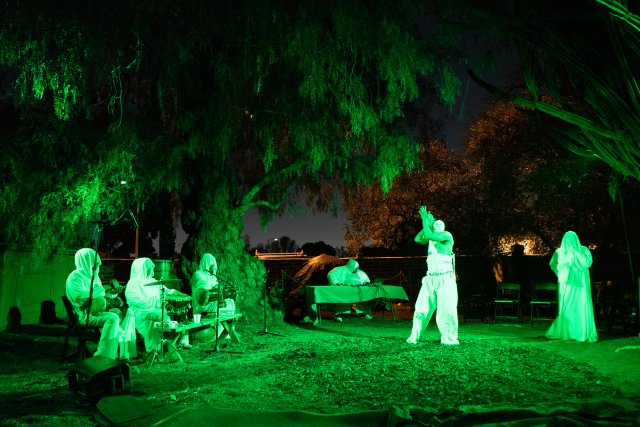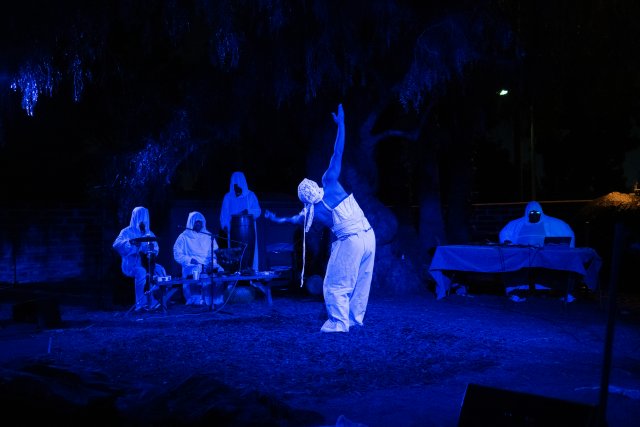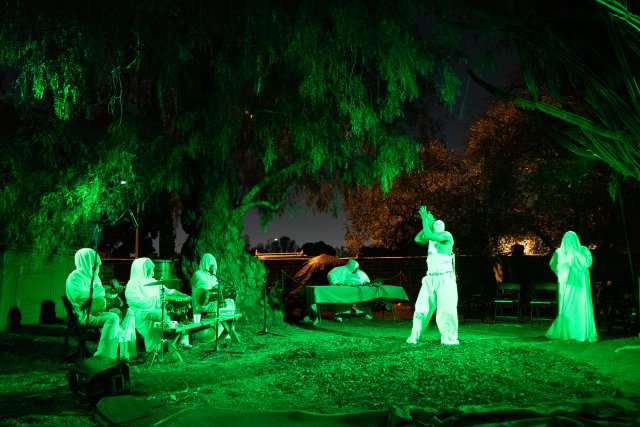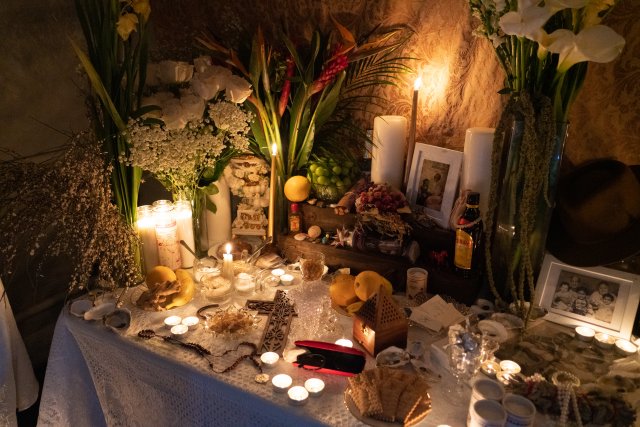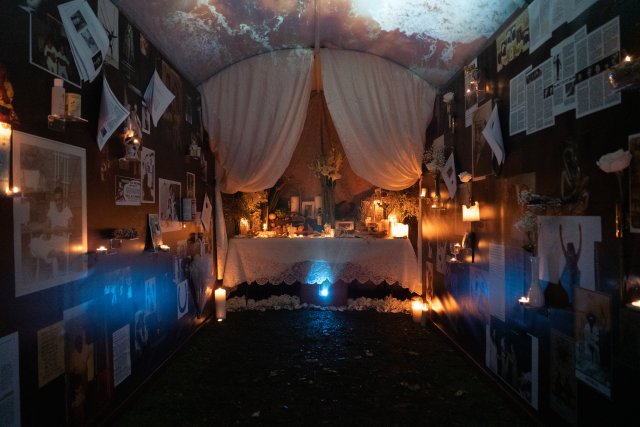The Horse at Long Beach Opera
James Darrah, a Most Modern Opera Artist, Makes His Mark
By: Sharon Eubanks - Mar 14, 2023
|
Long Beach Opera presented an intriguing new music and dance performance, The Horse. Created and performed by Chris Emile, Cody Perkins wrote the music and vocals are by Alexis Vaughn. The work bodes well for the new regime led by James Darrah. His Soldier Songs for Opera Philadelphia and Les Enfants Terribles at Omaha were operatic revelations. desert inn with Ellen Reid broke new ground as an operatic soap opera. The Horse succeeds in an unexpected venue with unexpected forms. Solider Songs was filmed on a Civil war battlefield. An Ellen Reid premiere took place in the Joscyln Museum in Omaha, where a playground was created for the performance. Darrah has a knock for picking locations. The Horse takes place at Rancho Los Cerritos in Long Beach. Early inhabitants used this site for formalized birth, rite-of-passge and death traditions and the expression of a belief in a supreme being, Chinigehinch. When you arrive, you are impelled to look around Rancho Los Cerritos. The area is wooded, a lone rabbit makes its way to a tree, looks around and across the road. It bounds off into the woods. Drums are playing lightly in the background as the musicians prepare for the evening performance of The Horse. The Horse is set in a large open area. In one corner, benches are arranged for the audience to sit and watch a 20-minute documentary about the artist and his creation of the dance. He talks about childhood and being one with nature. One segment features a woman answering questions about voodoo. In another part of the set, a tent contains an art exhibit. It is more like a shrine to poetry, spirit, horse shoes, and burning candles. An exhibition of life. As you leave the exhibit, you are instructed to follow a path. Imagine, if you would, walking in a forest, taking in the surroundings, and being at one with nature. Suddenly, you enter a clearing framed by an enormous tree and huge cactus (this is Southern California). The weather is cool. The air occasionally mists. Perfect conditions for the performance. The audience sits. Five figures covered in hooded white robes enter the clearing and take their places. They are accompanied by a sixth figure, the horse who is clothed in white pants and a white cloth that covers the entire face. Low chanting begins. You hear sounds of water flowing and subtle colors bathe the horse as the dance begins. The horse moves around the clearing. Slowly, looking around, he responds to the music. Electronic synthetic sounds with increasing intensity move through the horse. He reacts. Sounds of machinery; loud hammering jackhammers,and modern industrial noise impact the journey of the horse. The tempo increases. The drums become louder. The flustered horse paws the ground and thrashes about responding to the cacophony. Then a voice, pure and simple, pierces through the noise. The loud staccato sounds of modern life fade away. Water flows in the background. The drums fade. A flute plays. The horse is calmed. The journey is done. As I watched the dance, I could not help thinking back to the film and exhibit. There was the woman discussing voodoo. There were scenes of the artist connecting with nature. There was the talk about his childhood. There was the art exhibit and its religious and artistic impact on the dancer. To see the dance, you must see the film and the art exhibition. They cannot exist separately. Long Beach Opera looks to present works that expand the notion of "What is opera?" By providing the space to present The Horse, LBO understands how to prepare us for new spaces, new ideas, and new sounds of song. |


